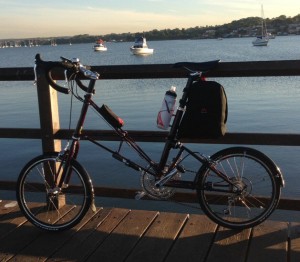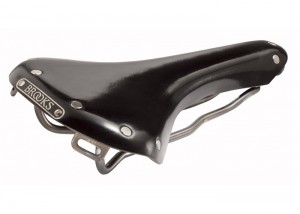Moulton FAQ (Frequent Annoying Questions)
The moment you decide to buy a Moulton you are aware that being a non-orthodox bicycle it will challenge what people accept about bicycle design. Many of these accepted design specifications the average rider, or let’s be honest keen rider, has never thought about at all. So when you arrive on a Moulton they immediately feel challenged or think you are a fool for buying such an “odd” bike.
1. Gee that must be hard work?
This question often has variants, “Those small wheels are hard work” or the best set of dialogue yet:
Roadie: Gee I hope you don’t have far to go!
Me: Why?
R: Well, you know, the wheels are small.
Me: But the gearing compensates for that.
R: Really?
I mean the lack of understanding about gearing is amazing. My Moulton TSR 30 is slightly lower geared than my Jamis Quest road bike, but this only becomes apparent downhill above 45 km/h. Not the place best average speeds are set. Is my Moulton hard work cause it has small wheels? No of course not. But like any variant in design what one hand giveth the other taketh away.
Small wheels means the following advantages:
- Quicker acceleration due to lower moment of inertia
- Quicker handling due to a smaller flywheel effect
- Less aerodynamic drag from the wheels
- Stronger and lighter wheels
But they deliver some negatives:
- Less angular momentum means they feel a little flat initially on a climb
- The quicker handling may appear twitchy to new Moulton riders
- Small wheels deliver a rougher ride
- Possibly slightly higher rolling resistance, mind you this is minimised by good quality high pressure tyres.
2. That must be a rough ride?
Many fail to recognise the subtle road suspension that a Moulton has. Not the gauche landing gear fitted to mountain bikes, but a simpler suspension setup that removes the harshness that small high pressure tyres deliver. On my Moulton the use of coil springing via leading links absorbs road shock but more importantly keeps the wheel in contact with the road which improves road holding. This truly is the benefit of suspension, improved road holding, that is its main purpose. A normal road bike bounces over bumps, the Moulton rides over them. This is most beneficial when cornering which is where the Moulton has a supreme handling advantage.
The rear suspension is a swing arm with a rubber spring, self damping and simple unlike many of the complex MTB arrangements, but again this is not landing gear, but road suspension, you will feel the bump but it doesn’t bounce the bike or deviate the bike’s course. The rear swing arm is a unified rear triangle design which means the bottom bracket is on the swing arm, minimising chain tension compressing the spring.
3. I think you’d go faster with bigger wheels!
Well this is a variant on the first but certainly relates to speed. Most people I meet out riding are on road bikes, and as such they move a long at a decent clip. My Jamis road bike is the only fair comparison to my Moulton, because I am the engine in both cases. It is about 1 kg lighter and a very nice ride. But there is very little difference between the Moulton and the Jamis across the routes I regularly ride. Little differences here, but to be fair the Jamis has ben ridden over these routes for years, while the Moulton has only had a 3 months of comparison. There are also wind effects that muddy the waters. There are a few climbs where the Jamis is ahead but not by a huge amount. In reality there is little difference between the two bikes.
4. So does it fold?
Most people recognise that small wheels means kids bike or a folding bike. So the Moulton with its seat height, must be a folding bike; it isn’t. My Moulton is separable into two parts, the front part is one-third, the back section makes up two thirds. The separability is a bonus of the frame design, but it is not a folder like a Brompton or a Birdy. The next question is normally a puzzled face or a verbalised “Why?”. “Why what?” “Why doesn’t it fold?” “Well,” I reply. “Because it isn’t a folding bicycle.” “So what’s the point?” they ask. To which I invariably comment on the Moulton being different approach to bicycle design, why do we always have to approach bicycles with a standard template, etc. You see with bikes we are so drilled with the orthodox that any variant mustn’t be as good or they’d all be like that.
5. What’s with all the tubes?
Well this is a “spaceframe” design. It uses a mix of tubes and thin rods to create a rigid structure that is stiff vertically and laterally. Unlike most bikes which laterally have movement this bike doesn’t, and the suspension provides the give that a frame otherwise has to deliver. The cost is increased weight, but it is separable which is a handy feature. It is made of Reynolds 525 chromium-molybdenum alloy steel, hardly cutting edge but lighter than older Moultons that used high tensile steel. Top end Moultons used silver brazed stainless tubes but then we are talking big $$$$. A TSR can be made to around 10 kg with careful component selection, but mine as a tourer is around 12 kg. Sure a fancy carbon bike is lighter, but then you look like every other MAMIL on their “plastic fantastics”.
The Moulton is a delightful approach to bicycle design. It is indeed unorthodox and as such challenges what many think are essentials in bicycle design. It is annoying but at the same time funny watching people try to rationalise a decision they wouldn’t have made.


